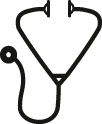Abstract

Background: Severe and critical COVID-19, including acute respiratory distress syndrome (ARDS), cardiomyopathy, and shock, have been associated with a 28-day mortality exceeding 50%. While dexamethasone (dex) improves survival in such patients and highlights a role for anti-inflammatory therapy, mortality remains high especially in those who do not respond initially. Phase II/III studies of the PI3K-d/g inhibitor duvelisib in patients with chronic lymphocytic leukemia or follicular lymphoma have demonstrated that duvelisib significantly downregulates expression of inflammatory cytokines and chemokines (e.g. G-CSF, GM-CSF, macrophage inflammatory protein-1 α and β). These same inflammatory molecules are upregulated in ARDS and COVID-19. Several murine models of acute lung inflammation and sepsis have demonstrated improved markers of inflammation and survival of mice treated with PI3K inhibitors. The original SAR-CoV-1 coronavirus had demonstrated the ability to hijack the PI3K signaling machinery in order to persist within human airway cells. Additionally, in the context of neoplasia, duvelisib polarizes macrophages to the M1 phenotype which has antimicrobial effector functions in contrast to the pro-inflammatory M2 phenotype. In the context of chimeric antigen receptor T (CAR T) therapy, the DiPersio lab has identified duvelisib as a potent mediator of cytokine release syndrome (CRS) without T-cell inhibition, an overlapping concept with COVID-19. We hypothesized that duvelisib could attenuate COVID-19 ARDS and CRS through M1 macrophage polarization, reduction in cytokine signaling/production, and elimination of viral persistence.
Methods: We conducted a multicenter, double-blind, placebo-controlled trial in which 28 patients were randomized 1:1 to duvelisib 25mg twice daily or placebo for 10 days. Eligible patients were 18 years or older hospitalized with a primary diagnosis of COVID-19 disease with either respiratory failure (≥ 50% lung involvement by imaging, invasive or non-invasive mechanical ventilation, or extracorporeal membrane oxygenation), new cardiomyopathy, and/or shock requiring vasopressor support. All patients were required to be receiving or have received dex 6mg daily or equivalent for at least 48 hours without improvement. All patients received prophylaxis for Pneumocystis jiroveci. We monitored viral load daily using quantitative RT-PCR to assess for changes in viral replication following initiation of therapy. Primary endpoint was 28-day survival. Secondary endpoints included: 60-day survival; duration on ventilator and vasopressors; hospital and ICU length of stay; viral kinetics; and adverse events. Correlatives included impact on cytokine expression measured by multiplex panel, viral kinetics by RT-PCR, and flow-cytometry to assess immune populations at various time points during therapy.
Results: Baseline and disease characteristics were well-balanced with the exception of baseline renal replacement therapy (Table 1). At day 29, 67% of those in the duvelisib arm and 62% of those in the placebo arm were alive. Secondary efficacy endpoints were comparable between the two cohorts. There was a trend toward improved 60-day OS in the duvelisib arm (60% vs. 46%, p = 0.36, Figure 1) and some patients in the treatment arm were noted to have quick radiographic and clinical improvements. Of those on ECMO at initiation 3/5 (60%) in the duvelisib arm and 1/4 (25%) in the placebo arm were successfully weaned. Adverse events (AEs) occurred at similar rates between arms. Among AEs of special interest previously reported with the use of duvelisib, one patient developed colitis ultimately deemed to be stercoral colitis and unrelated to treatment. No CMV reactivation or Pneumocystis jiroveci pneumonia occurred. Eighty percent of overall deaths were due to respiratory failure from disease progression. In the placebo arm, one patient died of Pseudomonas pneumonia and one died of cholecystitis.
Conclusion: In our pilot study, duvelisib did not show improvement in 28-day survival in a critically-ill, steroid-refractory population. However, there was a trend toward improved 60-day OS. No added toxicity was observed in those receiving duvelisib. Based on comparable safety, notable improvements in select patients, and a continued unmet need in this population, we believe larger studies are justified. Correlative data will also be presented.
Disclosures
Goldsmith:Sanofi-Genzyme: Consultancy; Wugen Inc.: Consultancy; Janssen: Consultancy. Pachter:Verastem: Current Employment. DiPersio:hC Bioscience, Inc.: Membership on an entity's Board of Directors or advisory committees; Amphivena Therapeutics: Research Funding; NeoImmune Tech: Research Funding; Macrogenics: Research Funding; BioLineRx, Ltd.: Research Funding; CAR-T cell Product with Washington University and WUGEN: Patents & Royalties; VLA-4 Inhibitor with Washington University and Magenta Therapeutics: Patents & Royalties; RiverVest Venture Partners: Consultancy, Membership on an entity's Board of Directors or advisory committees; Incyte: Consultancy, Research Funding; WUGEN: Current equity holder in private company, Research Funding; Magenta Therapeutics: Current equity holder in private company, Membership on an entity's Board of Directors or advisory committees.
OffLabel Disclosure:
Duvelisib was used for the investigational treatment of patients with COVID-19 critical illness
Author notes
 This icon denotes a clinically relevant abstract
This icon denotes a clinically relevant abstract
Asterisk with author names denotes non-ASH members.


This feature is available to Subscribers Only
Sign In or Create an Account Close Modal